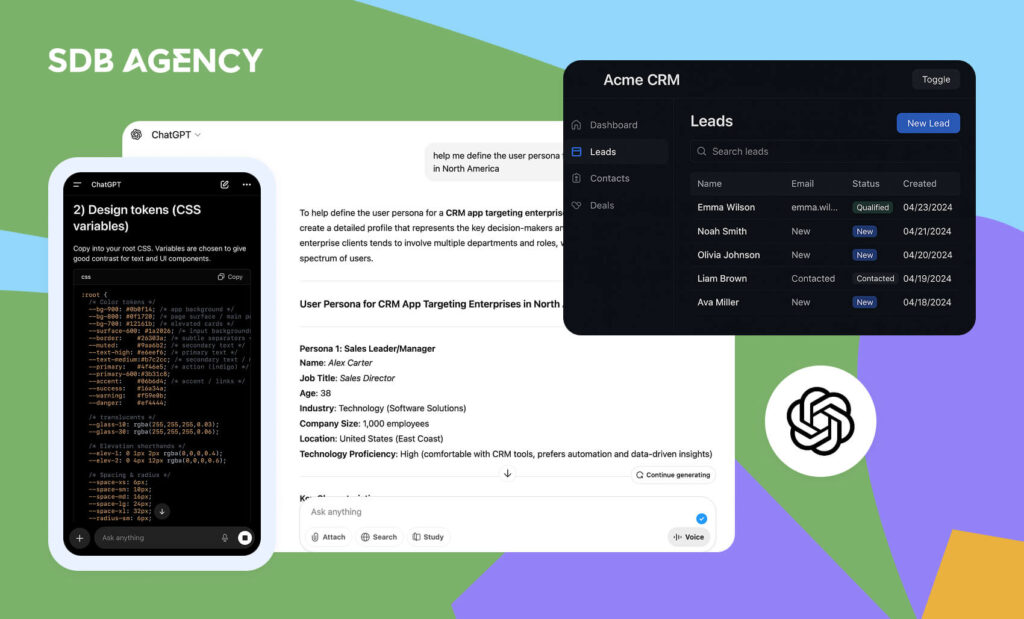Voice User Interface (VUI): Designing for the Future

Key takeaways
- Voice interfaces have become an integral part of our daily lives and drive the popularity of virtual assistants such as Apple’s Siri, Amazon’s Alexa, and Google Assistant.
- To design an effective VUI, it’s important to understand users’ intent and implement a robust NLP to interpret natural language speech accurately.
- The ability for users to search using verbal commands or bypass frustrating navigation menus allows VUI to deliver a significant increase in efficiency. It’s no wonder that more than 50% of users in the US engage in voice search every day.
How users can use voice commands to interact with technology is a big step forward in the evolving space of technology. The era of Voice User Interface (VIU) is finally here and looking to change how we use the internet fundamentally.
What is voice user interface? (VUI)
Instead of using physical input, VUI only relies on speech recognition and natural language processing to interpret verbal instructions. Commanding a computer to do a required action seemed so easy in science fiction like Star Trek, but our technology was not able to make it happen.
Today, with the development of natural language processing, voice interfaces have become part of our daily lives and are the driving force behind popular virtual assistants like Apple’s Siri, Amazon’s Alexa, and Google Assistant. As users continue to become accustomed to VUI, Technavio estimates its popularity will grow by an estimated 23.4% by 2028.
Understanding voice user interface (VUI)
Voice user interfaces (VUIs) have become a crucial element of modern technology. VUI lets users interact with the system through speech instead of typing or clicking a button. Voice recognition software supports this interaction, interpreting the human voice and translating it into commands the system will understand.
VUIs aren’t fixed to a single device type. Instead, they are integrated into multiple voice devices, from smartphones and tablets to car infotainment systems and smart speakers. More complex systems like home automation and interactive voice assistants like Google’s voice assistant use voice user interfaces to offer a more intuitive user experience.
Many voice projects demonstrate what VUI is capable of. For example, voice systems in smart homes can control lights and even order groceries by using voice commands.
In the business sector, voice recognition software embedded in customer service systems can improve customer satisfaction, efficiency, and ability to handle inquiries. These voice UI applications highlight their versatility and ways to revolutionize different aspects of users’ lives.
VUI: The pros and cons
Voice User Interfaces (VUIs) are an impressive leap in technological advancements. However, like any technology, there are a few advantages and disadvantages to their adoption in the space.
Pros:
- Accessibility and inclusivity: VUI brings another level of accessibility and aids those with reading and typing restrictions. This includes the visually impaired, elderly, and those with disabilities. VUI serves as a tool for broader digital inclusivity.
- Convenience: VUI allows users to interact with devices in the most natural way of communication: speech. It’s a hands-free interaction that works well for multitasking when physical interaction is less ideal.
- Efficiency: Voice commands are more efficient than clicking, making them faster for executing commands and seeking information.
Cons:
- Accuracy and understanding: Despite the impressive advancements, VUIs may still struggle with specific accents, dialects, and background noise, which can lead to misinterpretation of commands.
- Security and privacy: As VUIs always require you to turn on your microphones, there are concerns regarding eavesdropping and privacy.
- No visual feedback: VUIs usually lack visual feedback, which may disorient users’ interpretations, especially in complicated interactions.
Steps in designing for VUI
Understanding and incorporating key design elements into your business is the key to designing effective VUI. These principles will then guide the creation of an intuitive, easy-to-use VUI that offers a satisfying user experience. Here are the principles of designing voice user interfaces:
- Understand user intent: The first step is understanding what your users are trying to achieve when using voice commands. This involves extensive research and user testing to gather enough insights into their preferences.
- Natural language processing (NLP): Implementing robust NLP is essential for accurately interpreting and processing natural language speech. This ensures that the VUI will understand different accents and speech patterns.
- Content awareness: A good VUI should understand the context of the conversation and respond to it appropriately. This involves remembering previous interactions and using the information to offer relevant responses.
- Clear feedback: Providing clear feedback is crucial in designing VUI. Users must have confirmation that their commands are heard and understood. You can achieve this through tones or visual indicators.
- Privacy considerations: Voice interfaces usually require access to personal data. This is why prioritizing user privacy and ensuring all data is handled and stored securely are crucial.
- Error handling: Effective error handling is essential for a positive UX as it should seamlessly handle any misunderstandings or errors by getting users to provide useful suggestions.
What the future holds for voice user interface
Despite all its flaws, VUI’s future looks bright, with continual advancements and the integration of artificial intelligence and machine learning to improve speech recognition even further. As these technologies continue to develop, VUI will likely be increasingly adept at understanding context and emotions and may even predict users’ needs based on previous interactions.
VUI’s application is looking to expand far beyond the current use cases. For example, we may find more integration of VUI in vehicles for more intuitive and safer controls. Besides that, it will change the way we interact with the web. The ease with which a user can search with verbal instructions or avoid frustrating navigation menus means that VUI ensures an efficiency boost. It isn’t surprising that over 50% of users in the US use voice search daily.
Conclusion
Voice User Interface (VUI) is set to revolutionize how we interact with technology, offering a more natural, intuitive, and accessible form of communication. As VUI continues to evolve, its integration across various sectors, from smart homes to customer service systems, highlights its growing importance in our daily lives.
However, the challenges of accuracy, privacy, and lack of visual feedback remain key hurdles to overcome. As advancements in artificial intelligence, machine learning, and natural language processing continue to improve, VUI’s capabilities will expand, enhancing user experiences and transforming how we engage with digital content. The future of VUI holds tremendous potential, and as these interfaces become more sophisticated, they will play a vital role in shaping the next generation of human-computer interaction.




